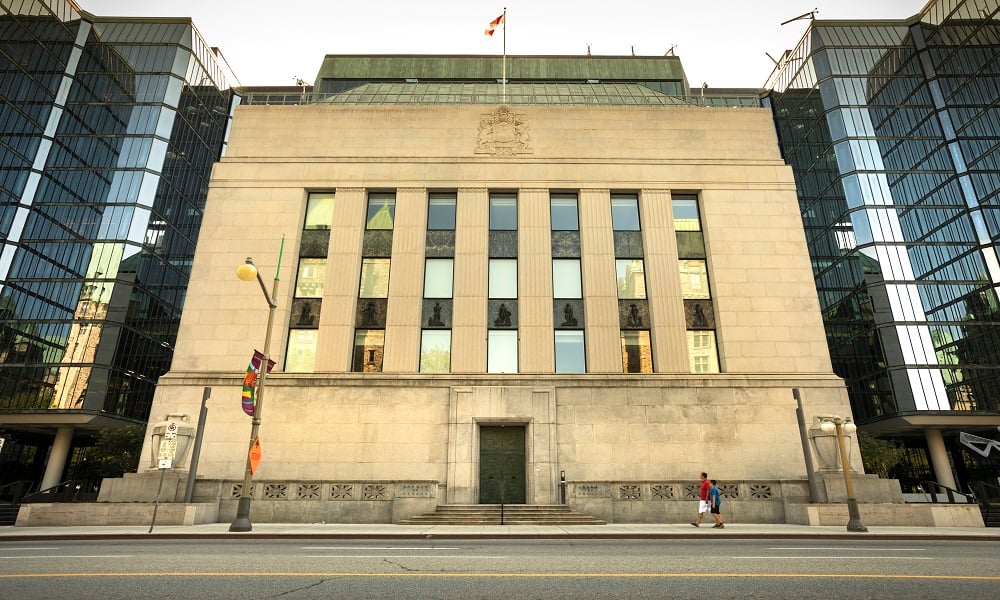Central bank’s go-to lever for inflation targeting could be widening Canada’s income divide

The Bank of Canada’s efforts to hit a specific inflation target by setting interest rates could be having an unintended impact on income inequality, according to a new paper from the C.D. Howe Institute.
In Monetary Policy, Income Inequality, and Inflation – What’s the Link?, Jeremy Kronick, the institute’s associate director of research, and Francisco Villareal, economic affairs officer at the United Nations’ Economic Commission for Latin America and the Caribbean, observed how patterns of income inequality within the country changed over the duration of the BoC’s inflation-targeting regime.
“Income inequality largely increased from the time the Bank of Canada began targeting inflation, through the late 1990s to the early 2000s, and flattened or decreased after the 2008 financial crisis,” they said, noting that income inequality today is greater than at the beginning of the period.
The two concluded from their results that expansionary monetary policy shocks have led to increases in income inequality, and contractionary monetary policy has led to the reverse effect. Crucially, they found that the magnitude of the impact of expansionary policies exceeded that observed for contractionary policies, implying that the two don’t net out over a business cycle.
“In a world where there is no income inequality, i.e., in which the demand-side of the economy can be represented by a single representative household, we can think of monetary policy as acting through the timing of consumption decisions,” they said.
“However, in the real world … these consumption decisions also depend on the degree to which households in different income quintiles spend different percentages of their income on consumption.”
Using data Statistics Canada and the BoC that covers the period from January 1997 to April 2018, they found that households in different income groups have different consumption baskets, with high-income households having a lower marginal propensity to consume than those in lower income brackets.
“[Households in the lowest income quintile] significantly dipped into savings or borrowed to finance additional consumption,” they said.
The authors also looked at the effect of monetary policy on inflation. While a contractionary monetary policy shock “unambiguously reduces inflation,” an expansionary shock “has a mostly insignificant effect.”
In explaining the tepid response of inflation to expansionary policy, they noted that increased household income inequality implies a reallocation of disposable income from lower-income households to higher-income households. With more household income in the hands of those in the higher-income quintiles, who have less marginal propensity to consume, the aggregate potential to stoke inflation is dampened.
“Our results lead to one particularly important conclusion for monetary policy: namely that the Bank of Canada needs to account for the impact of income inequality when modeling how inflation will respond to a change in the overnight rate,” they said.



